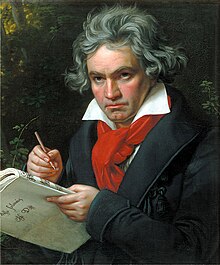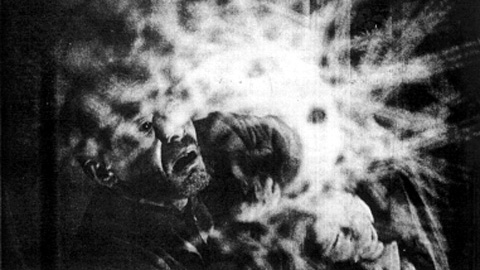The following article was written as an assignment for the Classical Japanese Cinema class.
Kinugasa Teinosuke's
A Page of Madness (1926) is now known as the first avant-garde silent film made in Japan. Besides its unique cinematographic style (no intertitles) and strange story (about a family at a lunatic asylum), it involves various intellectuals in its production including the novelist
Kawabata Yasunari in the context of a new literary movement emerging at the time. Above all, the film had been missing for almost half a century. It was found and released to the public again in 1971 though in an incomplete form, which makes the film more difficult to comprehend and appreciate. In this paper, a sequence of the film is to be examined to see how far the narrative of the film can convey the story to the spectators without any sound and intertitles and only with the graphic images by comparing the sequence with the script and other secondary sources.
Before examining the sequence, I would like to make a few points clear about the film edition and my analytical stand in this paper. For analysis, I use the existing 59-minute edition and consider it as a complete work (according to
Mariann Lewinsky, this edition is 500 meters shorter by reel than the original one released in 1926) (
Sharp). In order to get a clue for the interpretation of a sequence, I will often refer to the script that Kawabata wrote. Regarding this script, after the first draft was written by him, it had been changed throughout the shooting according to what was actually shot at the studio. After the shooting was done, a few reconstructed the script and Kawabata rewrote it. It was finally published under Kawabata's name with a small note saying that the story was made with the help of three people including the director Kinugasa (Kinugasa 71-72). I'd also like to refer to a secondary source such as Kinugasa's autobiography. I use these materials not as a support to reinforce my interpretation as the director's intention, but as a reference and guide to a possible interpretation that can be drawn out from the present film.
 |
| The Last Laugh |
The main difficulty in interpreting the sequence of the film lies in the style of using no intertitles. This style was strongly suggested by a novelist
Yokomitsu Riichi in the same literary group called Shin-kankakuha, to which Kawabata also belonged (Kinugasa 78). Lewinsky points out that a German expressionistic film titled
The Last Laugh (1926) by
F. W. Murnau, which was also made in the same style and released in Japan while Kinugasa was shooting the film, had also made a strong influence on him since he chose it as his favorite film (
Sharp). Since the film does not use any intertitles, the spectators are unable to understand the story by words and are inevitably forced to read the sequences purely consisting of images. At the time that A Page of Madness was first released in 1926, there was a story narrator called benshi at the theater along with a music band, which was quite common for a silent film show at the time. The benshi basically explained what's going on on the screen to the audience and told how the characters in the film felt based on the libretto of the film.
Tokugawa Musei, who was a well-known benshi then, actually narrated for the film (Kinugasa 79). On the other hand, the existing edition has no narration but music that was added later in 1971 by Kinugasa, which again makes the spectators understand the story only through the montages in the film.

Without any dialogues or intertitles, it is difficult to understand the meaning of the sequences so that the spectators have to look for a clue on the screen to understand the story better. The story mainly takes place at a lunatic asylum. An old janitor works there in order to get close to his insane wife hospitalized there. His daughter comes to the asylum to report her engagement. What is to be examined here though is a sequence showing linguistic signs not as intertitles, but as Japanese kanji characters tagged on props. In the middle of the film, there is a sequence that the janitor goes to a local festival, buys a lottery ticket, and wins the first prize. Before he actually buys the ticket, there is a long take that shows various kinds of gifts displayed randomly on the shelves such as kettles, pots, and pans for each prize. As the camera is panning, the gifts are shown at the back of the crowds with the tags indicating fourth, fifth, and eighth prizes on them. Among them, there is a wooden closet with the first-prize tag. It is clearly shown twice during the sequence. Besides that, the camera also shows a tag indicating the extra gift for the first prize. It is labeled on the long object and only shown for a few seconds. It looks like a soft cloth with a certain pattern hung on the wall. In the following scene, the chest is being brought down from the shelf and handed to the janitor. In the next scene, he is carrying it on his shoulders with the first-prize tag on it. He then meets his daughter on the way and shows her both the chest and cloth with a smile on his face. The scene in which an insane dancer is dancing in a fancy dress unlike the tattered one she usually wears in a cell follows the next. The spectators then understand that the janitor received something else beside the chest as the extra gift for the first prize and it was the fancy dress that he later gives to the poor ex-dancer at the asylum. This episode indicates that he is kind enough to give her a present. This also sets up his kind character for his continuous care and support to his insane wife in the next room even if she does not understand who he is at all. In the next scene, the spectators find out that the janitor is laughing alone in his room. It suggests that the whole lottery episode was just his daydream and is all about what he wishes to happen to him. From this short sequence, his tendency to daydream, and his humane characteristic, especially toward the insane patients at the asylum, becomes clearer to the spectators.

The sequence above, however, requires the spectator's sincere effort to pick up the clues and put them together. It is difficult to grasp the meaning of the sequence mainly for the following reasons: One of them is that not only for its grainy black-and-white shots and the fact that motions become quicker than the usual speed because of the 18 frames-per-second film is projected with 24 fps speed, but also for the way the scenes were shot. As the camera keeps panning and does not fix onto the dress, and the dress itself is not displayed in its own shape, we merely know the fact that there is something as an extra gift for the first prize. Even though the janitor shows the extra gift to his daughter for a moment right after he shows the chest to her, the main object focused on the screen is the chest, not the dress. Since there is no scene in which he either receives the dress at the festival or gives it to the ex-dancer at the asylum, it is a bit difficult for the spectators to notice and understand why she is suddenly dancing in the different dress in the next scene.
 |
| Kawabata Yasunari |
The lottery sequence also indicates what the janitor really wants for his daughter. There is no scene in which he actually gives the chest to her, but it is easy for the spectators to guess that he will surely give it to her later as a wedding present since a chest is a typical trousseau at that time in Japan. This suggests that he really cares about her marriage. In the script, there is a scene after this sequence which shows that she and her fiancée are shopping at a big furniture shop looking for a new chest (Kawabata 425). Including this one, most scenes between her and her fiancée in the script were deleted and only two of them (very short ones) remain in the present film. The omission of these scenes also makes it difficult to understand the relationship between them and what her marriage means to her family. We can barely guess that they are engaged because she shows her ring to her father in his room. In the script, there are several scenes that clearly show her crazy mother becomes an obstacle to their marriage (Kawabata 389, 426, 427). Without these scenes, we can barely imagine what she worries about only with her facial expressions and a momentary flashback of her fiancée. In his autobiography, Kinugasa commented on why he cut the scenes. He said that the deleted scenes were unnecessary as a result because most of them only showed the process of the events (Kinugasa 72). Eliminating the scenes with the daughter, however, blurs the narrative of the film. In the script, the story ends with a scene showing beautiful flowers in her fiancee's room, which indicates their happy wedding coming soon (Kawabata 436), whereas the film does not tell what happens to the couple. Instead, her wedding is visualized in her father's fantasy that she later married not her fiancée, but one of male patients at the asylum, and departed by car leaving her father and insane mother behind. In the present film, the story takes place not only at the asylum but also in the janitor's mind. Most of the subplots in the script are not used or used only as memories and fantasies of the janitor.
We have a hard time telling which scenes are fantasy and which are real. Because from the beginning to the end,
A Page of Madness is full of memories, flashbacks, imagination, daydreams of the characters using superimposition, cross-cutting, distorted images, and rapid montages. Even the reality is often shown as distorted images seen through the insane patients' eyes. We are often fooled by the montages and may come to wonder about what the 'reality' is in the film. In other words, not using intertitles is a way to push the spectators to the position where even a neutral text by the narrator cannot be found and to leave them in the situation that they have to find the sane reality in the film through careful reading of the montages by themselves.





.jpg/249px-My_Neighbor_Totoro_-_Tonari_no_Totoro_(Movie_Poster).jpg)





